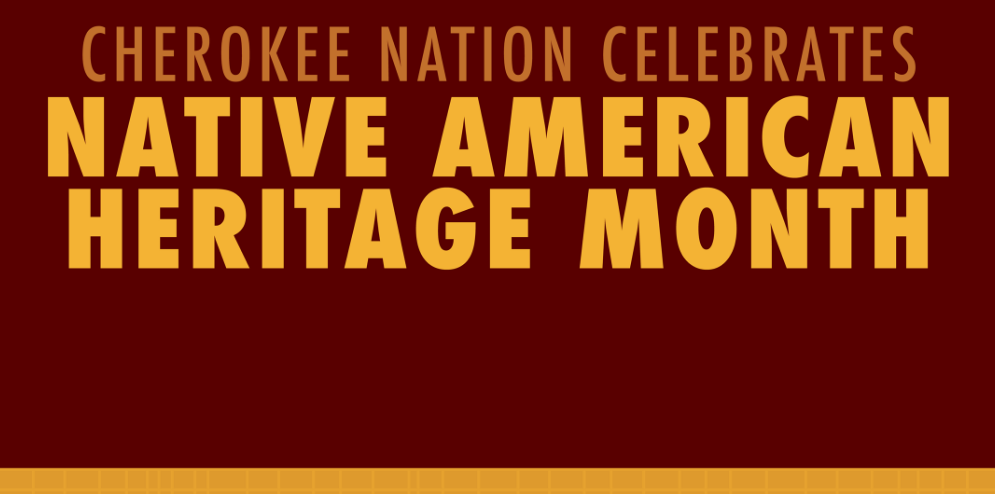
- Details
- By Chuck Hoskin Jr
Guest Opinion. November is when the United States celebrates Native American Heritage Month. At Cherokee Nation, we will certainly spend this month celebrating our heritage and culture with the rest of the country. We are also putting our thoughts into historic action.
For many of us, Native American Heritage Month is an opportunity to reconnect with Cherokee roots and experience the history of the largest sovereign tribal government in America. Cherokees can celebrate not only the accomplishments of our ancestors, but also what we are doing today to preserve and strengthen our unique culture.
Want more Native News? Get the free daily newsletter today.
Native Americans, including the Cherokee people, have fought for our sovereign rights and the well-being of our communities since first contact with Europeans. Because of our ancestors, perseverance in the face of adversity is deeply ingrained in the Cherokee way of life.
We must always remember that history and our language and culture remain our most important connections to past Cherokees. These bind us together today and ensure that we remain a distinct people for generations to come.

This Native American Heritage Month, I am especially proud that Cherokee Nation is expanding our language immersion school program by adding a second campus in Adair County. This is an important step towards the day when Cherokees all across our 14-county reservation are communicating in our language. Growing our language offerings is especially significant this year, the bicentennial of the Cherokee syllabary.
The new school site at the 13-acre Greasy School campus in Adair County will enable Cherokee youth in and around Adair County to study the Cherokee language full time. They will read, write and speak in Cherokee. Scheduled to open in 2022, it will be the tribe’s second Cherokee immersion school, joining the original institution in Tahlequah. As more of our young people receive language education, they will grow better prepared to carry on our culture and lifeways in the coming years.
The immersion school expansion is just one part of the tribe’s long-term strategy to revitalize the Cherokee language. The new school falls under the $16 million investment we funded two years ago through the Durbin Feeling Language Preservation Act.
We know that across Oklahoma, tribes are driving the local economy and attracting tourism and other investments with our world-recognized cultural heritage. Oklahoma’s most dynamic and forward-thinking governments remain its tribal governments. We are demonstrating accountable stewardship of our reservations, creating jobs and building successful collaborations to give Cherokee citizens, as well as our friends and neighbors, every opportunity to thrive and succeed.
And in November 2021, we are showing how Native American Heritage Month is a time to both respect the past and build for the future. Whether in business, health care, education, public safety or cultural preservation, our tribal nations are stronger than ever.
Chuck Hoskin, Jr. is the principal chief of the Cherokee Nation.
More Stories Like This
Why Federal Health Insurance Policy Matters to Cherokee NationThe Absence of October's Job Report Shows Why Native American Communities Need Better Data
Tribal IDs Are Federally Recognized. ICE Agents Are Ignoring Them.
Thanksgiving: Part of "Broken Circle Holiday"
Thanksgiving is a Tradition. It's Also a Lie
Help us defend tribal sovereignty.
At Native News Online, our mission is rooted in telling the stories that strengthen sovereignty and uplift Indigenous voices — not just at year’s end, but every single day.
Because of your generosity last year, we were able to keep our reporters on the ground in tribal communities, at national gatherings and in the halls of Congress — covering the issues that matter most to Indian Country: sovereignty, culture, education, health and economic opportunity.
That support sustained us through a tough year in 2025. Now, as we look to the year ahead, we need your help right now to ensure warrior journalism remains strong — reporting that defends tribal sovereignty, amplifies Native truth, and holds power accountable.
 The stakes couldn't be higher. Your support keeps Native voices heard, Native stories told and Native sovereignty defended.
The stakes couldn't be higher. Your support keeps Native voices heard, Native stories told and Native sovereignty defended.
Stand with Warrior Journalism today.
Levi Rickert (Potawatomi), Editor & Publisher
